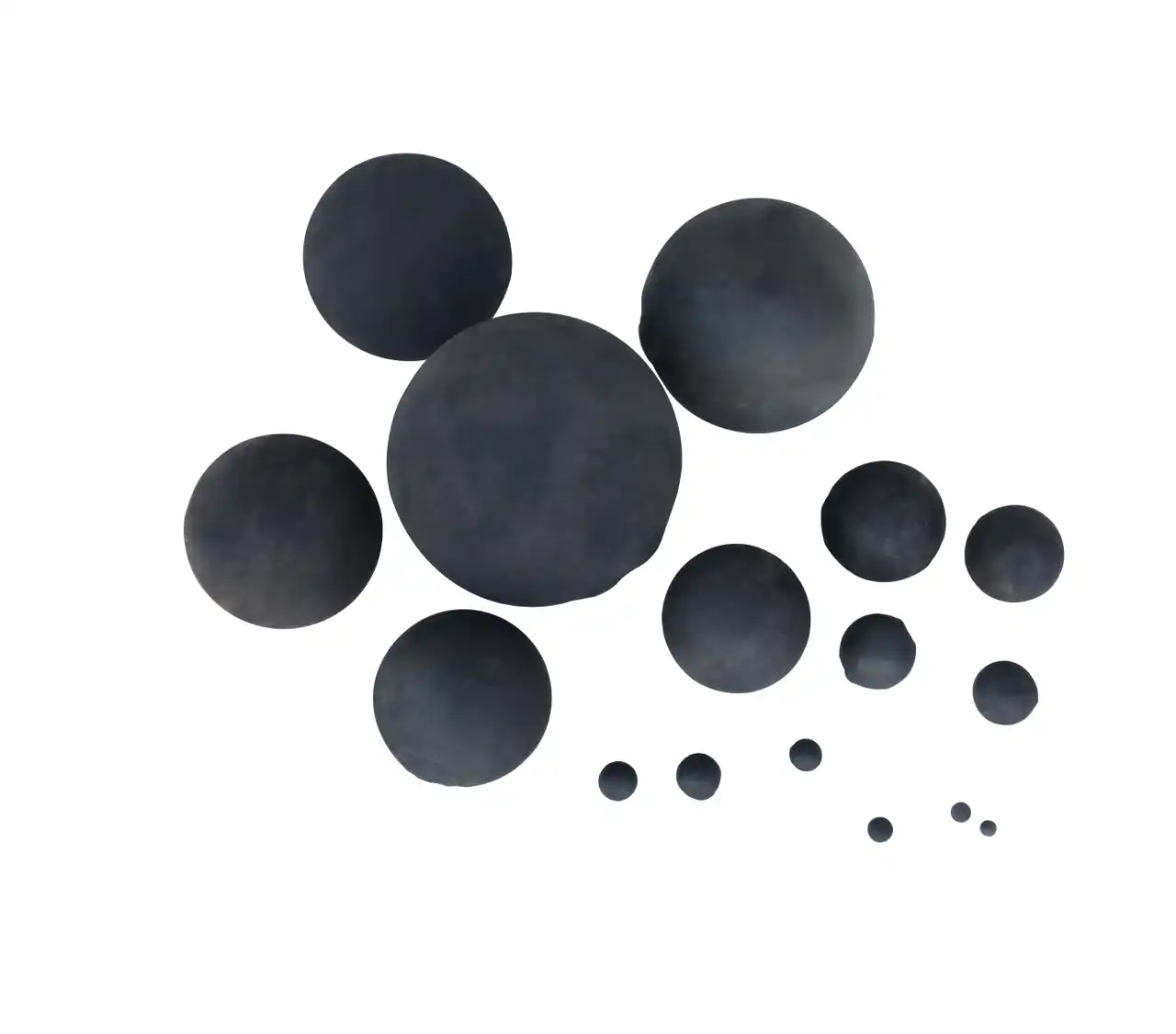Chemical Composition and Alloying Elements
The chemical composition of high chrome steel grinding media balls significantly impacts their wear resistance. The primary alloying elements, such as chromium, carbon, and manganese, contribute to the formation of hard carbides and a martensitic matrix, which enhance the material's resistance to wear.
Chromium, the principal alloying element, forms complex carbides that increase hardness and wear resistance. The chromium content typically ranges from 10% to 30%, with higher percentages generally resulting in improved wear resistance. However, the optimal chromium content depends on the specific application and operating conditions.
The chemical composition of high chrome steel grinding media balls is crucial to their performance and durability. Typically, these balls contain a significant percentage of chromium, usually between 10% and 30%, which enhances hardness and wear resistance. Other alloying elements such as carbon, manganese, and molybdenum are also included to improve toughness and strength. This carefully balanced composition allows these grinding media to withstand harsh operating conditions, making them suitable for various industrial applications, including mining and cement grinding.
Carbon content also plays a vital role in determining wear resistance. It influences the formation of carbides and affects the overall hardness of the material. The ideal carbon content varies depending on the chromium percentage and desired properties.
Other alloying elements, such as molybdenum, vanadium, and nickel, can be added in smaller quantities to further enhance wear resistance and other mechanical properties. These elements contribute to the formation of additional carbides and improve the overall microstructure of the grinding media balls.
Heat Treatment and Microstructure
The heat treatment process is crucial in developing the optimal microstructure for high chrome steel grinding media balls. Proper heat treatment can significantly enhance wear resistance by promoting the formation of a martensitic matrix and evenly distributed carbides.
Heat treatment plays a vital role in defining the microstructure of high chrome steel grinding media balls. This process involves heating the balls to specific temperatures followed by controlled cooling, which optimizes their hardness and toughness. The resulting microstructure typically consists of martensite, which provides excellent wear resistance. By adjusting heat treatment parameters, manufacturers can tailor the mechanical properties of the grinding media to meet specific operational requirements, ensuring they perform effectively under varying conditions and extending their service life.
The austenitizing temperature and duration are critical parameters in the heat treatment process. They determine the amount of carbides dissolved in the austenite and subsequently affect the hardness and wear resistance of the final product. Quenching, the rapid cooling process following austenitization, is essential for achieving a martensitic structure.
Tempering, performed after quenching, helps relieve internal stresses and optimize the balance between hardness and toughness. The tempering temperature and duration must be carefully controlled to achieve the desired microstructure and properties.
The resulting microstructure of high chrome steel grinding media balls typically consists of a martensitic matrix with dispersed carbides. The size, distribution, and morphology of these carbides significantly influence wear resistance. Finer, more evenly distributed carbides generally result in improved wear resistance.
Operating Conditions and Environmental Factors
While the material properties of high chrome steel grinding media balls are crucial, the operating conditions and environmental factors in which they are used also play a significant role in determining their wear resistance.
Operating conditions significantly influence the performance of high chrome steel grinding media balls. Factors such as the type of material being ground, the milling environment, and the presence of moisture can affect wear rates and overall efficiency. Additionally, environmental factors, including temperature and humidity, play a role in the grinding process. Understanding these conditions allows manufacturers to optimize the selection and use of grinding media, ensuring maximum productivity while minimizing wear and maintenance costs in various industrial settings.
The impact velocity and angle of the grinding media balls during operation affect the wear mechanism and rate. Higher impact velocities generally lead to increased wear, while the impact angle influences the type of wear (e.g., abrasive, erosive, or impact wear) experienced by the balls.
The characteristics of the material being ground, such as its hardness, abrasiveness, and particle size distribution, also influence the wear resistance of grinding media balls. Harder and more abrasive materials tend to cause more rapid wear.
Environmental factors, including temperature and pH of the grinding environment, can affect wear resistance. Elevated temperatures may alter the mechanical properties of the grinding media balls, while extreme pH levels can lead to corrosive wear in addition to mechanical wear.
The presence of corrosive agents or oxidizing elements in the grinding environment can accelerate wear through chemical reactions with the surface of the grinding media balls. This emphasizes the importance of selecting the appropriate material composition for specific operating conditions.
The rotational speed of the mill and the ball charge volume are additional factors that influence wear resistance. Higher speeds and improper ball charge can lead to increased impacts and accelerated wear.
Conclusion
The wear resistance of high chrome steel grinding media balls is influenced by a complex interplay of factors, including chemical composition, heat treatment, microstructure, and operating conditions. By carefully considering these factors and optimizing the material properties and processing parameters, manufacturers can produce grinding media balls with enhanced wear resistance, leading to improved efficiency and reduced operational costs in various industrial applications.
For more information about our high-quality high chrome steel grinding media balls and how they can benefit your specific application, please don't hesitate to contact us at sales@da-yang.com and sunny@da-yang.com. Our team of experts is ready to assist you in finding the optimal solution for your grinding needs.









